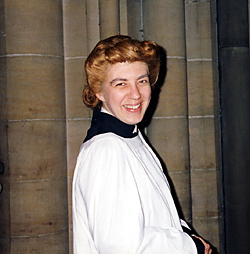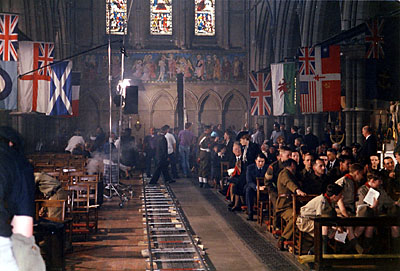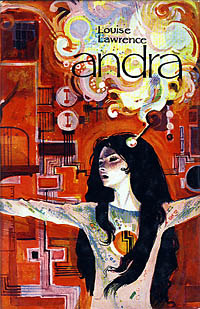 I’ve spent the last couple of days at Northern Voice 2007, and its informal prelude, Moosecamp 2007, in Vancouver. I’m a admittedly dilatory blogger, and was looking for inspiration, as well as information about the latest toys and developments. This I got, in plenty. The sessions were recorded and are being podcast in their entirety; several sessions have supporting pages in the Northern Voice Wiki, including links to background information and links; and of course the whole thing has been enthusiastically blogged (technorati: northernvoice, nv07) and photographed (flickr: northernvoice, nv07). So further description of the content would, I think, be redundant. Here follows my personal comment.
I’ve spent the last couple of days at Northern Voice 2007, and its informal prelude, Moosecamp 2007, in Vancouver. I’m a admittedly dilatory blogger, and was looking for inspiration, as well as information about the latest toys and developments. This I got, in plenty. The sessions were recorded and are being podcast in their entirety; several sessions have supporting pages in the Northern Voice Wiki, including links to background information and links; and of course the whole thing has been enthusiastically blogged (technorati: northernvoice, nv07) and photographed (flickr: northernvoice, nv07). So further description of the content would, I think, be redundant. Here follows my personal comment.
Much of the substance of the presentations on the social aspects I attended was provided by the academics, who are enthusiastic about the use of social technologies (primarily blogs and wikis) as a means of promoting interaction and learning in the classroom, virtual or otherwise. It did occur to me later, while talking to Lynda, to liken these anecdotes to a case series in the medical literature, in which a new intervention produces impressive results in a small group of selected subjects, only to show a much smaller or no effect when a randomized controlled trial is conducted on a more general population. The enthusiasm of developers and early adopters must account for a great deal of early promising results in education as well as in medicine. More than one speaker alluded to the introduction of a social software approach tending to polarize students: there were those who participated with enthusiasm, and those who found the requirement to come to grips with the technology an imposition. After a session on the use of wikis in education, it occurred to me that I wouldn’t have found having my developing notes edited by other people useful in my learning process. Useful in helping clarify and refine expression, yes, but part of learning is singularly non-collaborative in nature – the part that involves the fitting of knowledge most efficiently into one’s own unique schema (I don’t think I’m misusing the word too grossly). Having to open that process up to other people would, I think, risk interfering with it. The tangible products of the process should not be confused with the learning itself. But the idea of developing intellectual dialogue as an aggregate of posts does have the advantage over traditional collaborative projects with a single output where peoples’ individual effort (of lack thereof) becomes undistinguishable. The idea of having a digital archive of one’s notes and writings is, for someone who has at least thirty years of notebooks to be shifted from lodging to lodging, very appealing. And searchable (please).
On the technical side, I attended sessions on mashups for non-programmers, OSX programming, photography for the web (although I had to miss Saturday’s session because of the need to head home), wikis, WordPress vs Drupal. I never did get entirely straight what was a mashup and what was an aggregation; the best I could determine was that a mashup involved extracting data from one source and feeding it into another, rather than combining data from two sources. I suspect that much of Bioinformatics would fall under the category of mashup, pulling data intially stored for one purpose and one format out programmatically, and feeding it into another form of analysis. It would be interesting to see whether the evolution of bioinformatics and social media was proceeding independently or cross-fertilizing at any point. Based upon what I saw while doing bioinformatics courses, the bioinformaticians working on visualization could show the social webbers a thing or two about the visual display of information, although bioinformatics continues to depend heavily on Perl and the web seems to be moving away from Perl. Multimedia mashups are still at a very primitive stage. Text is text, stllls are stills, sound is sound, and movies are movies, and although they can be organized and inserted into the same page, any kind of real integration is still remote. Edward Tufte’s books have some thrilling examples of what can be done with integrating images and text. Start animating them, moving them through time, and add sound, and the results will be spectacular, in the hands of someone sufficiently skilled, sufficiently inspired, and with a sufficiently complex message to convey. Complexity and presentation have to match; if information is too complex for its mode of presentation, the result is what Tufte describes in the cognitive style of Powerpoint, what is familiarly referred to as ‘dumbing down’. If the information is too simple for the mode of presentation, the result leaves one feeling manipulated; ‘slick’, I think is the pejorative there. In assembling complex presentations, I find it difficult to say how much the computer can assist the conceptual work in the translation of concept into image/text, though it can certainly substitute for deficiencies in straightforward technical skills.
Given the way I came into blogging, I noticed the lack of creative writers. I wonder if I could talk some of SF Canada’s west coasters into contributing next year to a session or two on the blog as writer’s journal, creative workroom, collaborative tool, experimental literary form, or other, that I can’t think of right now.
But I now have my week’s listening ahead of me, catching up with all the sessions I missed because I was at other sessions, or working my way across town to catch the bus home.
 While rummaging through boxes of old negatives in search of a certain damaged negative I am wondering if I might resurrect, I happened upon a handful of photos from my brief, obscured* career as a television extra. The series was Seaforth, filmed in Leeds, and a member of the choir I was in was organist at the church chosen to film a memorial service for the war dead after which the military police showed up to arrest the hero. They needed a choir. So I took a day off work, and went back to the 1940s. All the mens’ hair was too long, so they got haircuts, and all the womens’ was too short, so we got wigs, though the hairdresser was vexed that the wigs had too posh a hairstyle for our class. She teased and tugged and restyled. It was mid afternoon before the hairstyling and the dressing and the makeup and the standing around progressed to filming, which consisted of standing in the choir stall watching the hero squeeze into a row, take a hymnbook and start conspicuously singing. Over and over again. *Alas, when the series aired, in the single long shot down the aisle, I was hidden behind the bishop. My gutteral pronunciation of Earth, though, is audible on the sound-track rendition of “Abide with Me.”
While rummaging through boxes of old negatives in search of a certain damaged negative I am wondering if I might resurrect, I happened upon a handful of photos from my brief, obscured* career as a television extra. The series was Seaforth, filmed in Leeds, and a member of the choir I was in was organist at the church chosen to film a memorial service for the war dead after which the military police showed up to arrest the hero. They needed a choir. So I took a day off work, and went back to the 1940s. All the mens’ hair was too long, so they got haircuts, and all the womens’ was too short, so we got wigs, though the hairdresser was vexed that the wigs had too posh a hairstyle for our class. She teased and tugged and restyled. It was mid afternoon before the hairstyling and the dressing and the makeup and the standing around progressed to filming, which consisted of standing in the choir stall watching the hero squeeze into a row, take a hymnbook and start conspicuously singing. Over and over again. *Alas, when the series aired, in the single long shot down the aisle, I was hidden behind the bishop. My gutteral pronunciation of Earth, though, is audible on the sound-track rendition of “Abide with Me.” The view from the choir stalls.
The view from the choir stalls. This is a post I have been meaning to write for a while, ever since this book arrived on my front doorstep, courtesy of
This is a post I have been meaning to write for a while, ever since this book arrived on my front doorstep, courtesy of  I’ve spent the last couple of days at
I’ve spent the last couple of days at